Eimmart: Anna begs Aeneas to stay
Annotations
Anna delivers Dido's request to Aeneas that he should remain in Carthage longer; Mercury stops up Aeneas’ ears.
Anna überbringt dem Aeneas die Bitte Didos, er möge noch länger in Karthago bleiben; Merkur halt Aeneas die Ohren zu. (Suerbaum)
Engraving from a German children’s picture-book version of the Aeneid by G. J. Lang and G. C. Eimmart, “A tapestry of Roman virtues as seen in Vergil’s Aeneas and his brave deeds, rendered in sparkling engravings, as illustrations of the remarkable deeds of antiquity, for the common benefit of noble youth,” (Peplus virtutum Romanarum in Aenea Virgiliano eiusque rebus fortiter gestis, ad maiorem antiquitatis et rerum lucem, communi iuventutis sacratae bono, aere renitens) (Nuremburg: J.L. Buggel, 1688), pl. 16.

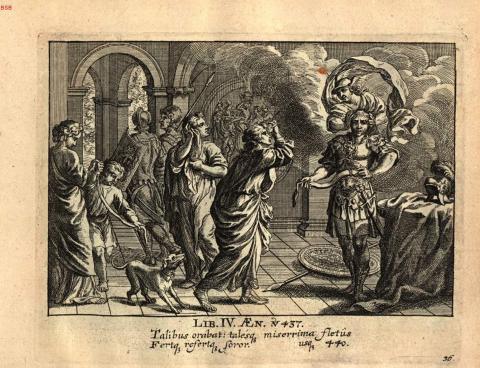
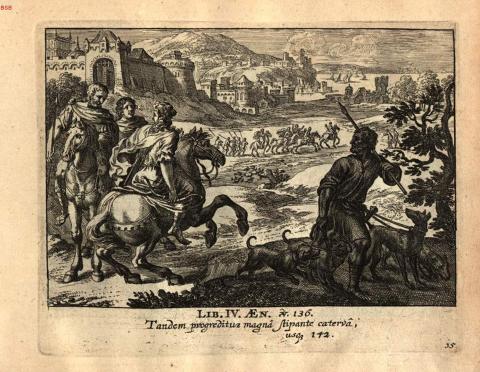
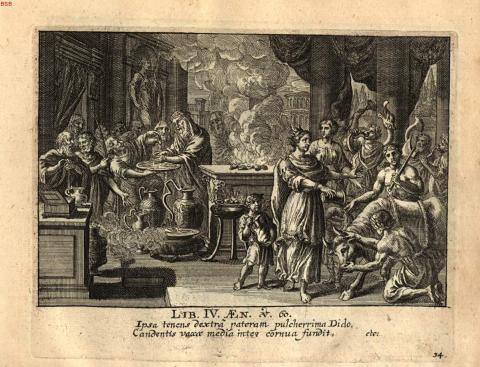

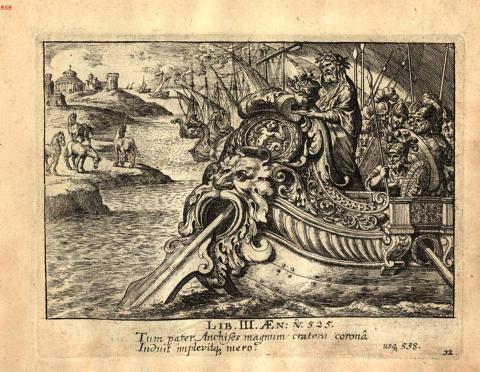
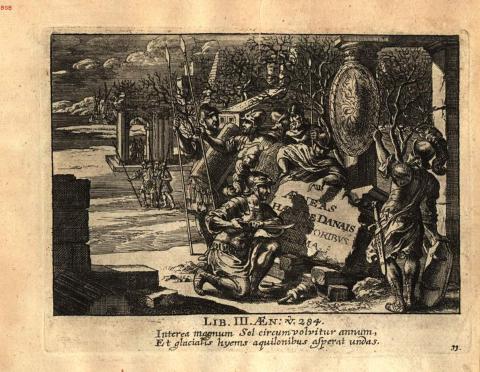
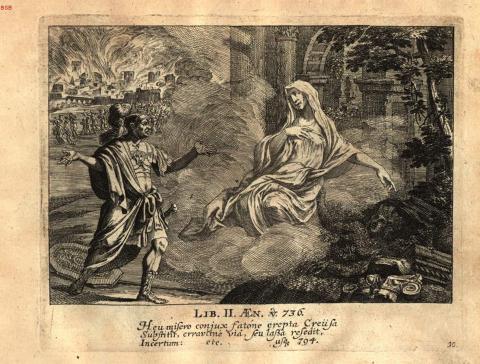
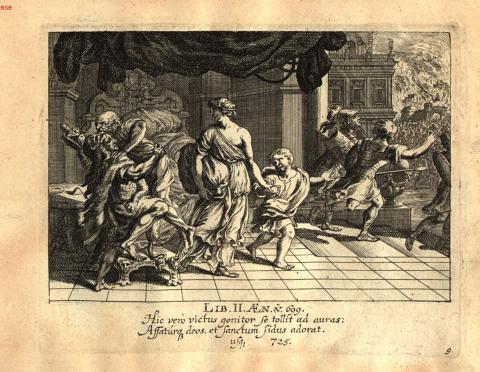
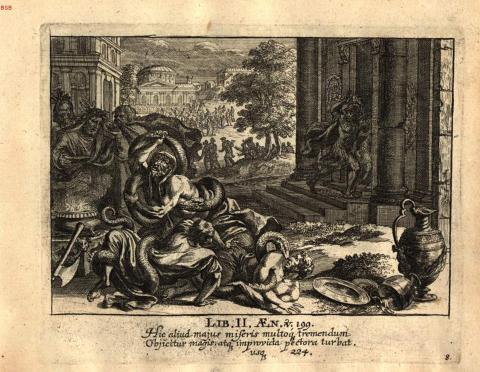
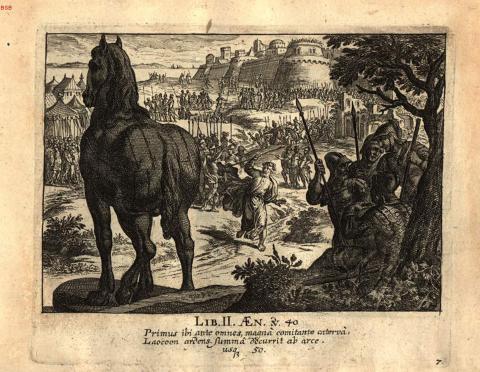
Anna stands in the center of the engraving, her hands clasped in supplication. Aeneas is preparing to leave: his spear and shield lie on the ground behind him, his helmet just to his left, and he is in the act of buckling on his sword belt. Mercury, recognizable by his winged helmet, floats above Aeneas and stops up his ears, as at line 440 (fata obstant placidasque viri deus obstruit auris.) (Lucy McInerney)